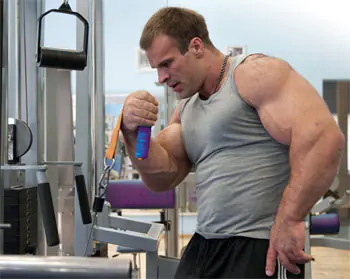Nowadays, in the countries of the post-Soviet space, a sport known since the beginning of our era – arm wrestling – is gaining great popularity. 
Despite this, the USA is considered its homeland, where local truckers often organized amateur competitions among themselves in roadside taverns, and among them were their own unofficial champions...
In many training methods for “heavy” sports, for example arm wrestling, there is now a little chaos, because the mechanical transfer of approaches from weightlifting has not yielded results. Therefore, many became interested in how arm wrestlers train.
Many who have attended armwrestling training have noticed that they train differently from, for example, powerlifters or bodybuilders. Of course, they have basic exercises in their training arsenal, but the main attention is paid to special exercises aimed at training the muscle groups of the forearm.
At the same time, training the muscles of the forearm, just like the lower leg and abdominal muscles are considered heavy. Therefore, a large number of exercises are needed to develop muscle groups from different angles, and also a very important factor is the correctly selected optimal load. Moreover, all this can be done with a barbell, dumbbells and other weights, for example, a kettlebell or weight on a belt works well.
Arm wrestlers often use different types of grips, from above, from below, varying the grip: wide, medium, narrow.
For them, there are many types of training modes, for example, dynamic and static, where part of the amplitude of movement is used, as well as mixed, which implies a delay of several seconds until the middle of the amplitude, followed by acceleration. Without such an approach, it is impossible to work out the set of muscles of the shoulder girdle that are involved in wrestling.
We hope that with the help of these materials, you will be able to find out for yourself how arm wrestlers train and understand the basic principles of their training.



